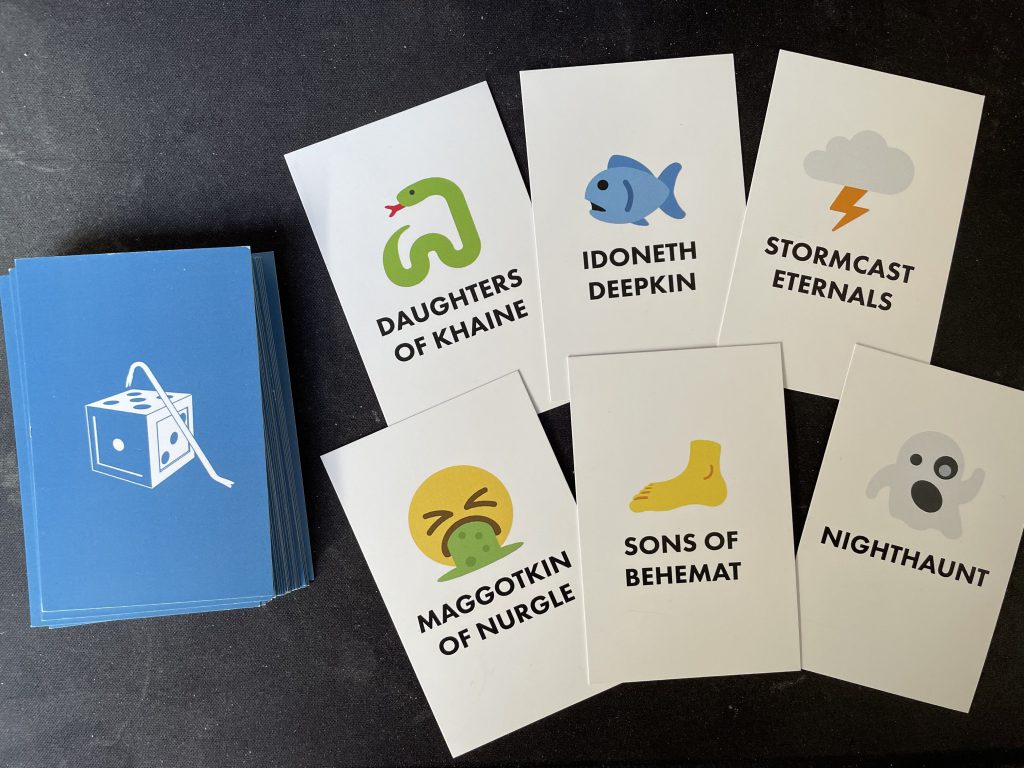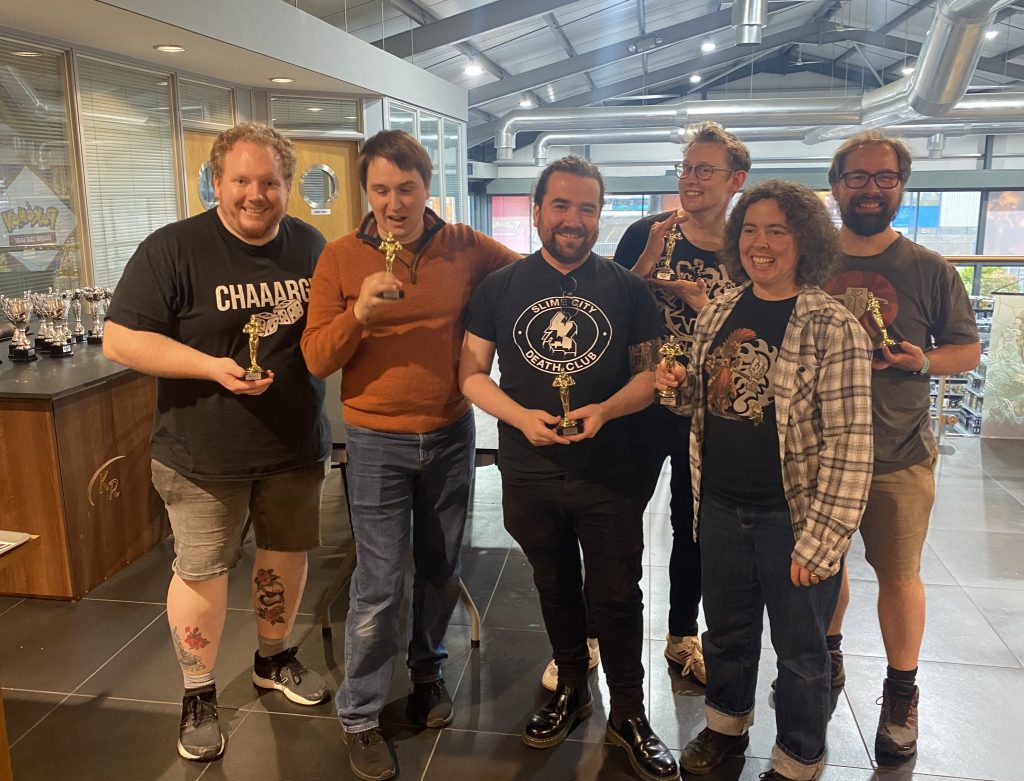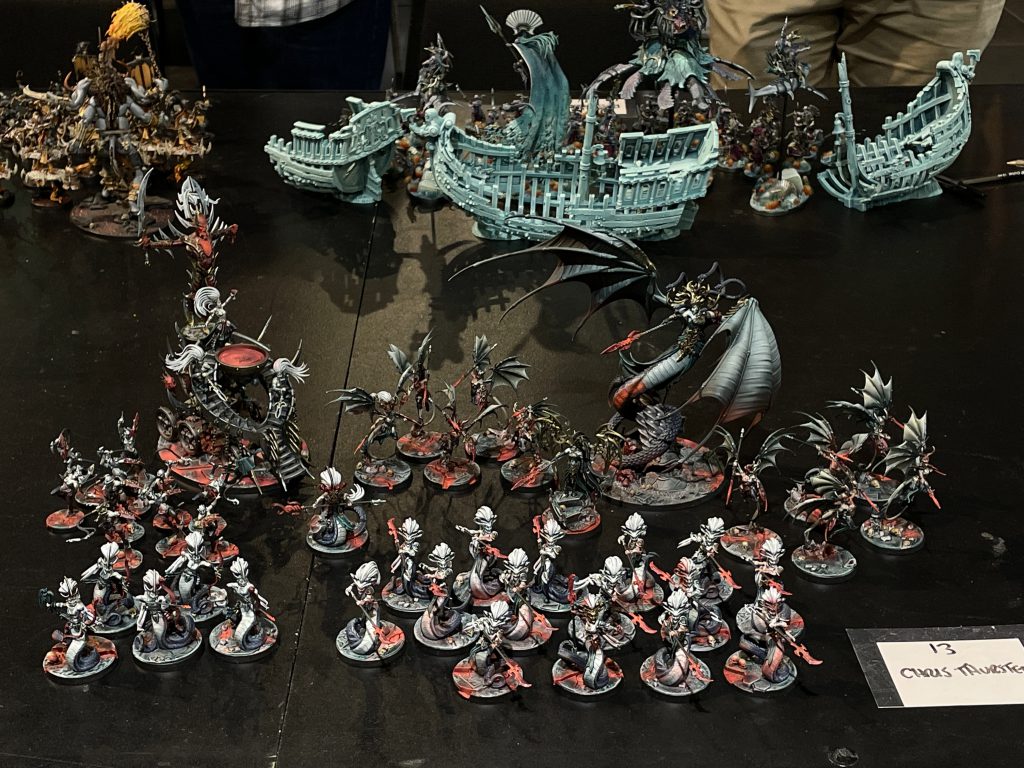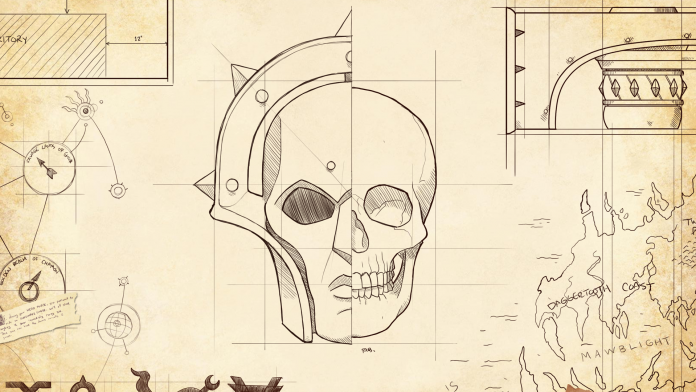If you’re a regular Goonhammer reader, you might have come across James “One_Wing” Grover’s excellent Start Competing: Warhammer 40,000 Team Tournaments article recently. Well, 40k isn’t the only game where teams can duke it out for overall victory; there is a growing team event scene for Age of Sigmar, including official Games Workshop events at Warhammer World, weekend events like Bloodtithe and Brotherhood organised by dedicated and passionate TOs, through to high-level international events like the AoS Six Nations and AoS Worlds.
In this series we’ll be following Team Rollmodels through their preparations for, and attendance at, the Brotherhood III team tournament at Firestorm Games in Cardiff, UK in January 2023.
What is the team format, and why does it rule?
Most players’ exposure to Warhammer formats beyond regular one-on-one matched play is probably limited to doubles games, where teams of two players face off against each other across a single board. Luckily, the team format isn’t just an extension of this, with Apocalypse-style mega-games – instead, opposing teams match their players up against their opponents, splitting into multiple one-on-one games before collating the results to determine which team has won overall victory.
In order to match these individual opponents up, teams will draft the specific matches. To avoid this becoming a scrum an event will usually require teams to have nominated captains, and even non-playing coaches, to do this away from the team at the start of the round. There isn’t a feeling in Warhammer like finishing a draft and turning around to see your entire team gnashing and wailing at you in agony over it.

As we’re talking about Brotherhood specifically, the details of this series are going to be focused on the previous packs for those events, but there are some differences between different tournament organisers when it comes to how they run battleplans, scoring, and match-ups. Broadly, the rounds of the Brotherhood team tournament can be divided into three phases:
Match-ups – as with any event, at the start of each round teams will find out who their opponents for the round are, and which set of tables they’ll be playing on. Each round will have a number of battleplans pre-defined, usually half as many as the total team size. After the usual introductions, and congratulations/commiserations on previous rounds, the team captains can get down to the business of working out the pairings. Honestly, match-up processes and strategy could probably fill most of an article by themselves, and will vary between events, but to summarise as simply as possible:
-
- For the first battleplan, each captain places a card representing one of their team’s armies face down on the table.
- The armies are flipped simultaneously. Each team places a choice of two options down for the opposing team’s army to face.
- Choices are revealed simultaneously. Unchosen cards return to the captains’ hands, leaving two confirmed match-ups on the table to play battleplan 1.
- Dependent on team size, the above steps are repeated again for the next scenario(s).
- The final scenario will be filled by Team A’s leftover card from the penultimate battleplan being matched into the card remaining in Team B’s hand, and vice-versa.
The goal in the match-up phase is to create a landscape which is as favourable as possible to your team. This could be by trying to avoid specific match-ups of armies, guaranteeing a player gets the battleplan they are best at, or denying the same to an opponent. Rounds are won on the tabletop, but they can absolutely be lost in the match-up phase.
Games – players pair off into the match-ups determined by their captains, and play a regular game of matched play Age of Sigmar using the battleplan they were matched against. For all intents and purposes the actual games are indistinguishable from any normal tournament, notwithstanding the regular eyebrow raises and sympathetic faces from teammates as you fail yet another charge.

Scoring – Scoring varies between events, but at Brotherhood each game has a pool of 20 points split between the two players depending on the margin of victory, number of battle tactics scored, and scoring/denial of grand strategies. These game scores are then added up across the teams, giving total combined scores which are compared to each other to determine the victorious team. In a 6-player team event where each team scores three 20-0 victories the teams will be tied 60-60, so it’s easy to see how even if a player has a bad match-up, playing well in defeat to try to eke even one or two points out of the game can be a really important contributor to overall team victory. Each round result determines rankings for the next round, with higher-placed teams being matched up against each other in a classic Swiss-style format.
Often, events will implement lower and upper points caps for round scores. For example at Brotherhood, an event with six player teams, there are 0-120 points available per round across six games, but scores are capped at lower and upper thresholds of 30 and 90 points respectively. This stops teams from acquiring an unassailable lead or an unrecoverable deficit early in the competition, especially in round 1 where there is a higher chance of top-tier teams being matched into more casual gamers.
List-building for a team tournament
Matthew ‘Chimp’ Ward: What you want in a team, ideally, is multiple armies providing coverage against the common archetypes you expect to see. If you only have one army that has game into castle shooting builds, then that’s an incredibly easy matchup for your opponents to dodge and you’re building a draft disadvantage into your team.
Rich “Cronch” Nutter: Exactly this. Building an efficient set of lists where armies are biased to be powerful within their specific capabilities, whilst still presenting a team that overall can take on all comers, is a bigger challenge than it seems at first! On top of this, team events often have restrictions on duplicating allegiances, warscrolls, traits and artefacts, so players can find themselves building armies that are quite different from what they’d expect to take to a singles event.
We’ll be examining list building and team composition in more depth in a future article.
How is it going so far?
Chimp: We play with a team called Rollmodels, named for the online community we all met through, and this is our third run at the Brotherhood team event. The first time around we placed somewhere in the bottom third. Last time, we placed dead last. That does mean this year’s award for coming last is named after us, which is nice.
We put very little effort into team composition, practice, or even really list writing last time, and it showed. Clawing good matchups out of the draft was difficult because the armies we took had so many overlapping good and bad matches – you’re always going to have some players probably taking a bad matchup in any given round but ideally you are trying to minimise this.
So the very first thing the team has to do this year before anything else is quite simple: we have to decide our identity. Are we going to approach everything based on vibes again, and probably lose again? Or do we want to try a bit harder. Nobody is under any illusion of getting within touching distance of a podium here, but it’s about setting goals of what we think we can achieve and what we want to achieve. This means a conversation with the whole team, so we’re on the same page going forwards.

Cronch: I’d echo Chimp here – I feel like the last place wooden spoon award has galvanised the team a little, so we’re going to have some open conversations about how we want to approach the event and our lists this time round.
On a personal level, I am finally accepting that you can run a tight, competitively-focused list whilst still giving your opponent a great game of Warhammer, so I am very keen to start trying harder at events and practicing more. So my preference is to push hard for a best-ever team result, but I absolutely am not interested in doing that if it compromises the fun for someone else on the team.
Aside from our varied gaming abilities, we all enjoy the hobby side of Age of Sigmar. Last year, Matthew and Chris were skilled enough to have their armies nominated for the painting shortlist, with Chris picking up the third-place trophy! Getting a nomination at Brotherhood 2023 is a personal goal for me, although I know the chances will be dependent on which army I end up bringing – our competitive goals may mean that I’m willing to give up the chance of a painting accolade in favour of making a better contribution to team composition.
Chimp: I’m in the fortunate position of owning a lot of fully painted armies, and whilst my Deepkin have picked up nominations for painting I’m not under any illusion that that’s basically my ceiling, so I can afford to be as flexible as needed going forwards.

Brotherhood III
Team Rollmodels is returning to Brotherhood with the same team members as last year: Chris, Laura, Luke, Matthew (Chimp), Michael, and Rich (Cronch). The initial list of ticket holders has been published, and at first glance it looks like we’ll encounter a lot of the same teams as we have in previous years. One of the great things about any regular or annual event is the opportunity to catch up with friends in the community and team events add an extra element to this, with friendly rivalries forged in the fires of previous years’ matchups. The relatively small field (often 20-ish teams) means that you’ve got a comparatively good chance of being matched into people you know when compared to a 100-player GT.
Once we’ve decided as a team how hard we want to push ourselves competitively, we’ll have plenty of work to do in deciding lists, playing practice games, analysing match-ups, and probably painting models, all of which we’ll cover in future parts of the series.
That’s it for this introduction! Catch up next time as we check in with the team and try to make some decisions about lists.
Have any questions or feedback? Drop us a note in the comments below or email us at contact@goonhammer.com.


